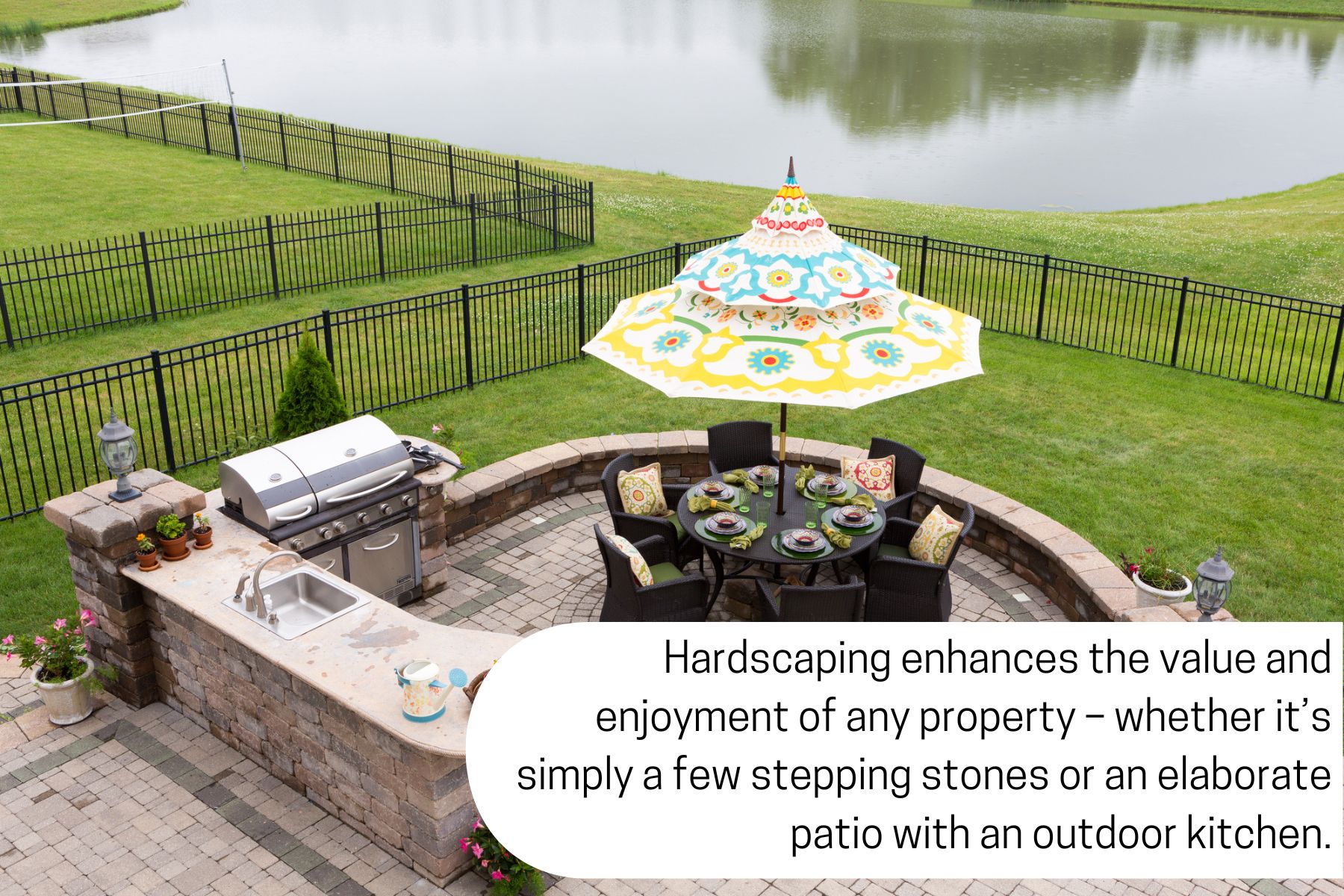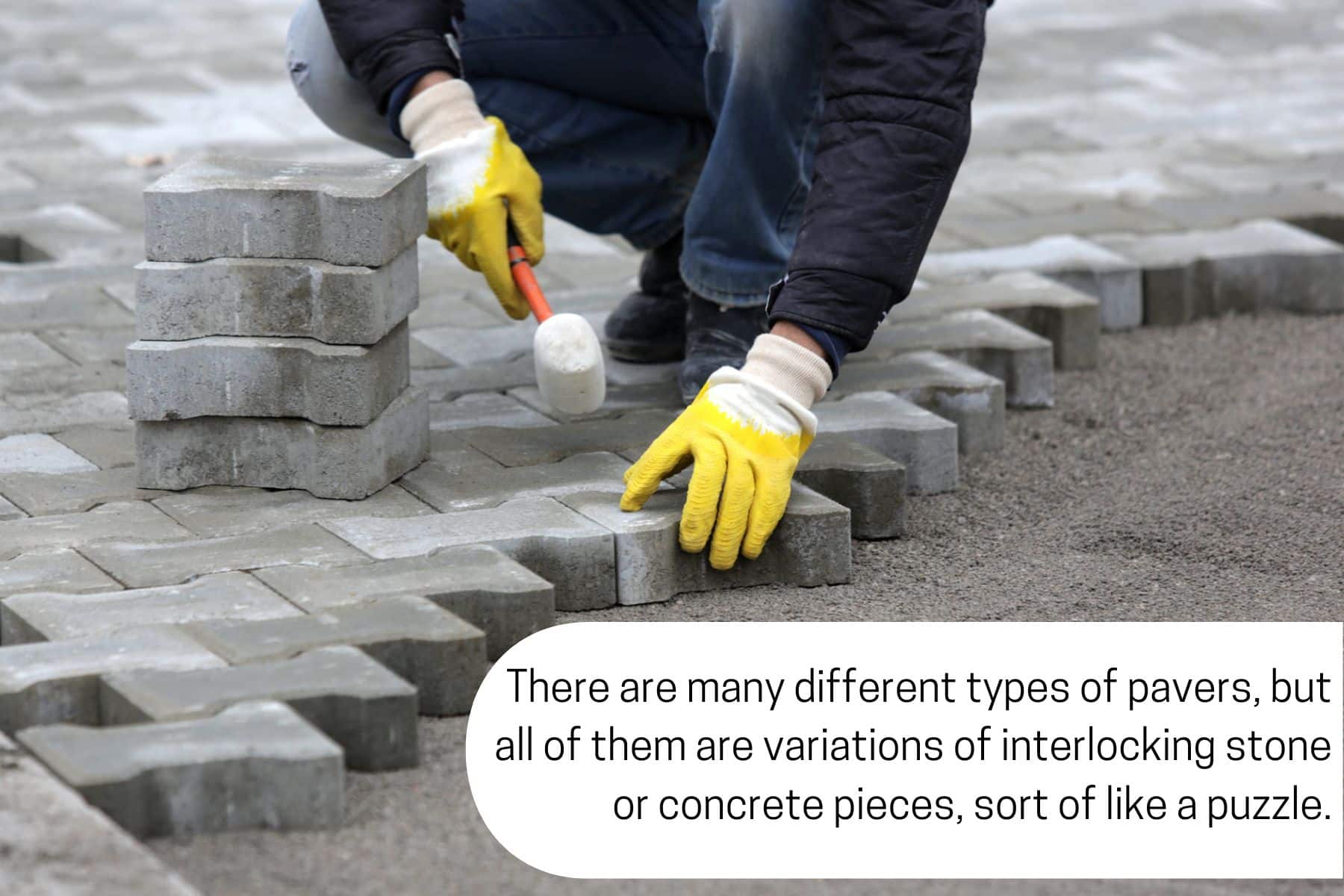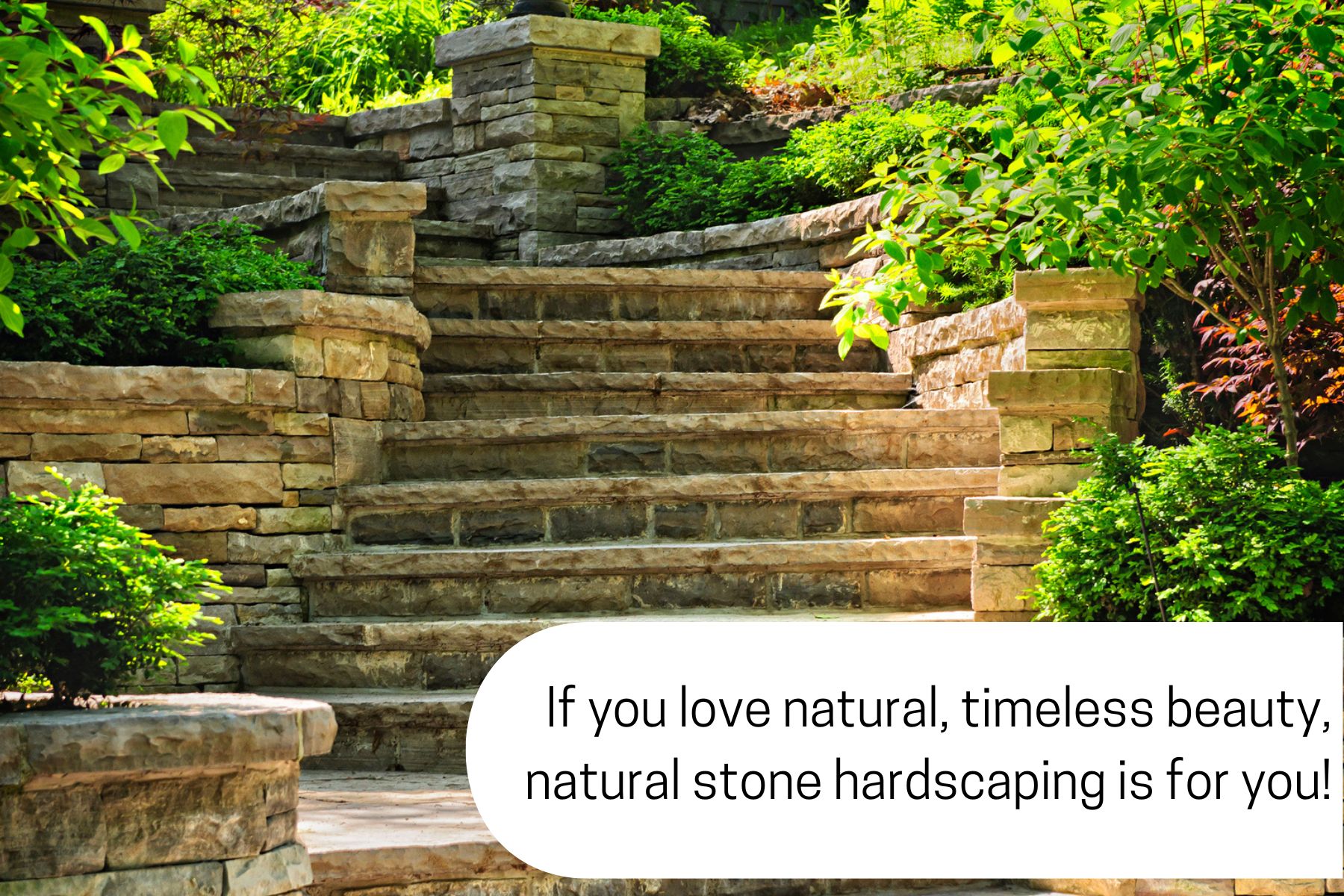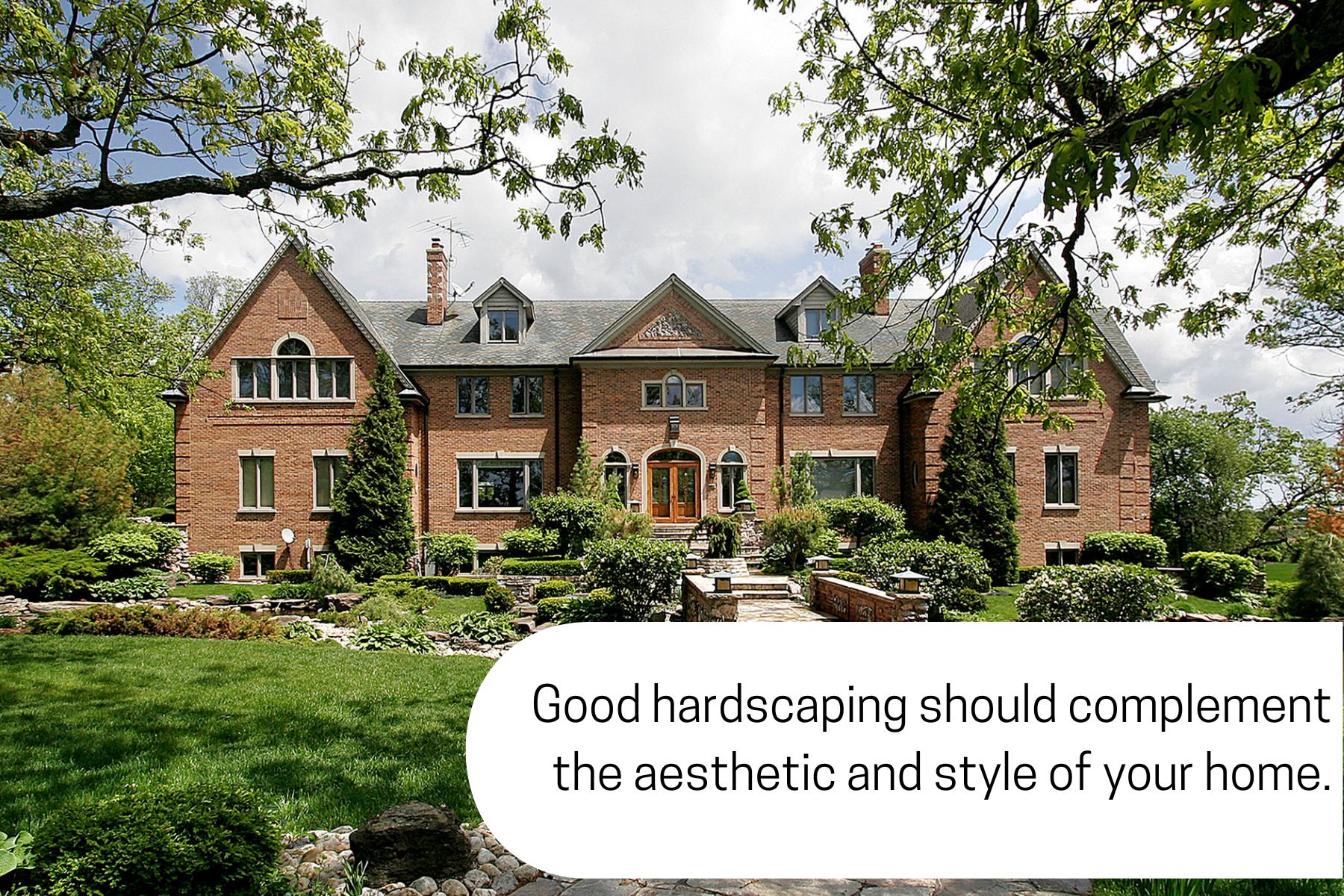A Beginners Guide to Hardscaping
Every homeowner wants a beautiful outdoor space where they can bask in tranquility and forge memories with the people they love.
However, bringing an epic outdoor space to fruition is a complex task involving many different projects and elements.
One under-thought element of a fantastic landscape is the hardscaping.
Today, Choice Exteriors would like to guide you through a bird’s-eye view of hardscaping and how you could incorporate it into your property.
Get ready to take a trip through the world of hardscaping!
What Is Hardscaping?
The term “hardscaping” isn’t used as often as “landscaping.” People generally use the term landscaping to refer to all the parts of your outdoor property.
Hardscaping refers specifically to manufactured landscaping elements, such as walls, walkways, fountains, patios, or other artificial elements. It’s a sub-category of landscaping.
The other sub-category of landscaping is “softscaping,” which refers to all the living elements in your landscape, such as trees, grass, shrubs, and flowers.
How is hardscaping beneficial?
Hardscaping is an integral part of a well-designed landscape and serves several purposes simultaneously.
- It adds to the beauty of your landscape and offsets the softer, more natural beauty of softscaping.
- It adds functionality to your landscape. For example, walkways and patios make your property better suited for entertaining and relaxing.
- It solves practical problems like erosion, water runoff, and muddy areas.
- It creates a foundation around which to design your softscaping and adds variety and charm to your space.
Hardscaping enhances the value and enjoyment of any property – whether it’s simply a few stepping stones or an elaborate patio with an outdoor kitchen.
In the following sections, we’ll look at what materials you could use for hardscaping and some tips for incorporating hardscaping into your property.

7 Common Materials For Hardscaping
Now that we’ve defined hardscaping let’s look at some materials for hardscaping. The following list includes seven of the most common materials you’ll find, along with a quick look at their pros and cons.
Let’s start with concrete:
1 - Concrete
Concrete for hardscapes is a popular and versatile choice. And you can use it for almost any type of hardscape you want to construct. Stamped concrete (which is stamped to resemble other materials such as pavers or tile) is a popular choice.
Pros:
- Highly customizable and versatile
- Inexpensive
- Durable
Cons:
- Prone to cracking with freeze/thaw cycles
- Lacks authentic charm
- Hard to repair seamlessly
2 - Brick
Brick has a timeless look that many homeowners love. It makes good walkways, walls, and even patios and can be arranged in unique and creative brick patterns.
Pros:
- Timeless, classic look
- Relatively easy to repair
- Excellent heat retention, making it a good choice for ovens and fire pits
Cons:
- Can be challenging to install
- May form mold and mildew in high-moisture areas
- Prone to cracking and chipping
3 - Pavers
There are many different types of pavers, but all of them are variations of interlocking stone or concrete pieces, sort of like a puzzle. Pavers are most often used for paver patios or walkways.
Pros:
- Incredible range of aesthetics
- Easy to install and repair
- Versatile
Cons:
- Some types can be expensive
- May allow weeds to grow through the cracks between pavers
- May shift and become uneven over time

4 - Wood
Yes, wood can be a hardscape material too! You can use wood for fences, decks, pergolas, and more. You can also use it for edging pathways and flowerbeds or creating raised beds, but it doesn’t last as long as non-organic materials.
Pros:
- Provides a warm, natural look
- Relatively easy for DIYers to work with
- Can be stained or painted
Cons:
- Not as long-lasting as other materials
- Requires regular maintenance
- Prone to splintering and warping
5 - Natural Stone
Natural stone is commonly used for walkways, patios, retaining walls, or simply as a decorative addition to a landscape. If you want timeless, natural beauty, this material is for you!
Pros:
- Unique, natural look
- Adds durable, timeless appeal
- Virtually never wears out!
Cons:
- Can be difficult to install
- Can be expensive
- May be oddly shaped and irregular

6 - Tile
Typically made of ceramic or porcelain, tile can be used for walkways, patios, pools, or decorative designs such as mosaic floors.
Pros:
- Resistant to moisture and stains
- Easy to clean and maintain
- Comes in lots of different patterns and designs for artistic looks
Cons:
- Cracks easily
- Can be slippery when wet
- May be expensive
7 - Loose Stone
Finally, we have loose stone, which includes all types of gravel, pebbles, and crushed stone. Loose stone is a good choice for pathways, borders, decorative accents, or weed cover for large areas.
Pros:
- Provides good drainage
- Easy to install
- Natural, organic feel
Cons:
- May shift, spread, and settle over time
- Can be painful and difficult to walk on
- Does not provide a good base for large items such as grills
12 Tips For Incorporating Hardscaping Into Your Landscaping
Feel ready to give hardscaping a try? The options are endless and only limited by your creativity!
If you’re ready to give it a whirl, here are 12 short tips for creating a hardscape that is functional and beautiful:
1 - Create focal points - Adding hardscape elements like statues, fountains, and fire pits draws the eye to create an interesting focal point.
2 - Use color wisely - Incorporating a pop of color into your landscape is another way to draw the eye and create interest.
3 - Use patterns and shapes - Shapes and patterns within your landscape make it more intriguing and interesting. Tile and brick are wonderful for creating mesmerizing patterns.
4 - Add privacy - A wall or privacy fence could be a good idea if you like privacy.
5 - Consider the view - From which direction will you most often be looking at your landscape? You especially want the view from your home to be attractive.
6 - Incorporate shade - Shade will increase your property’s functionality during the hot summer months.
7 - Consider your home’s architectural style - Good hardscaping should complement the aesthetic and style of your home.

8 - Focus on functionality - How will you use your hardscape? Thinking about its intended use will help you make wise decisions about layout and materials.
9 - Remember climate when choosing materials - Some materials don’t do well in certain climates–for example, concrete may crack in extreme cold.
10 - Incorporate lighting - Lighting provides a space with stunning ambiance as well as safety and functionality.
11 - Add texture - Think about adding a variety of textures to your landscape to create visual interest.
12 - Consider adding water or fire features - Water and fire features are a great way to add relaxation and interest to your space.
This list is just the beginning, but we hope these tips help get your creative juices flowing so you can incorporate some stunning hardscaping into your landscape designs!
Conclusion
If you want to make your backyard beautiful, consider adding some hardscaping to your design! If you want to start today, contact us at Choice Exteriors–we would be happy to help.
We offer a variety of home exterior services, including:
- Stucco remediation
- Siding
- Roofing
- Windows and Doors
- And more!
We’ll do our best to make it easy to work with us, too.
If you want more advice and tips for making your home a space you are proud of, check out some of our other blog posts:
Sometimes it can take time to find the right professional to do the job. Make sure to choose a roofing company that is helpful, transparent, and has good communication skills and good reviews.
If you live in Pennsylvania, New Jersey, or Delaware, give Choice Exteriors a call! We’d love to chat with you about your roofing options.
Besides roofing services, we also offer:
- Stucco Remediation
- Siding Services
- Window and Door Installation
- Exterior Trim Installation
- Decking Services
Call us today, or use our online tool to schedule an estimate. We can’t wait to hear from you!


